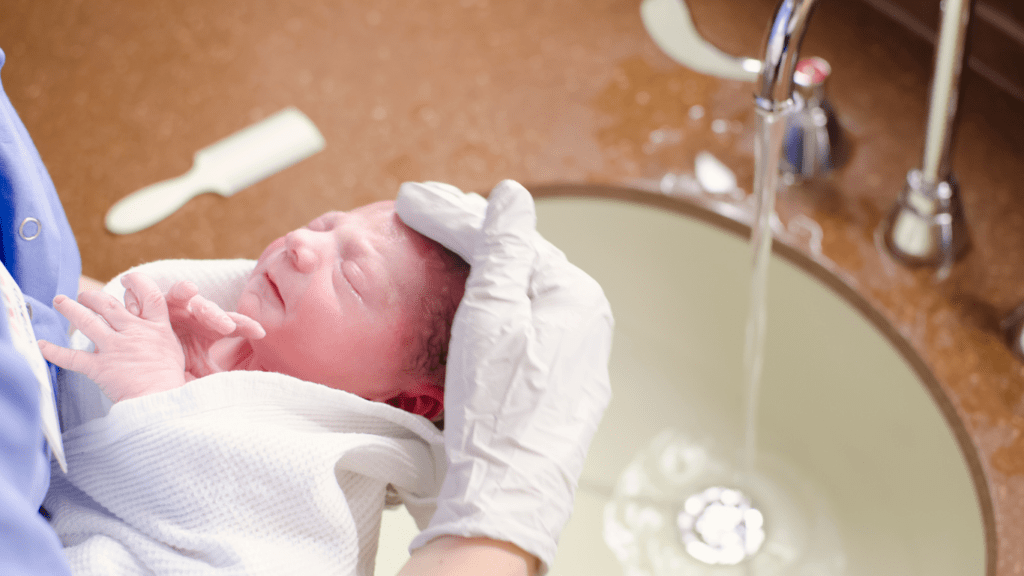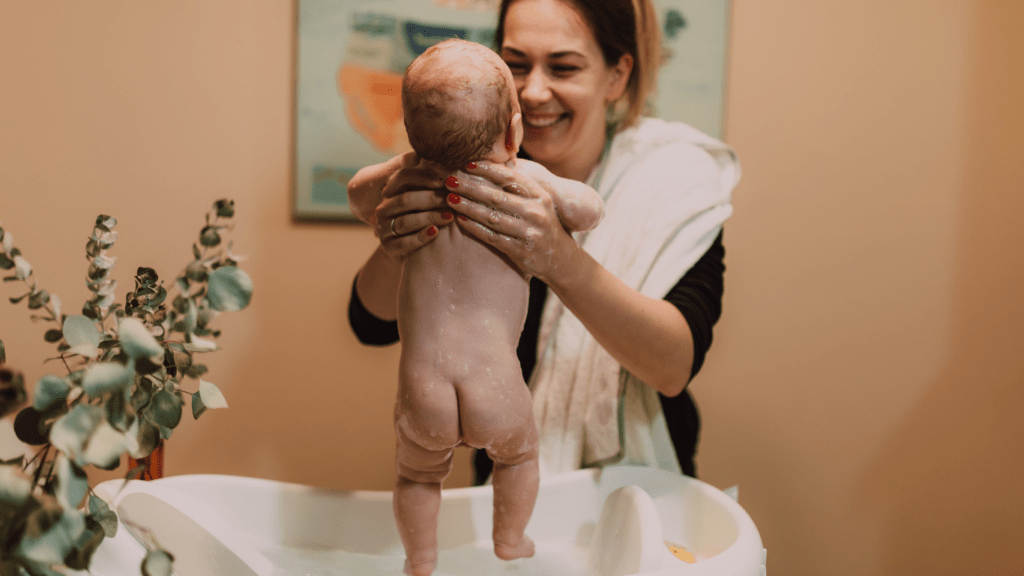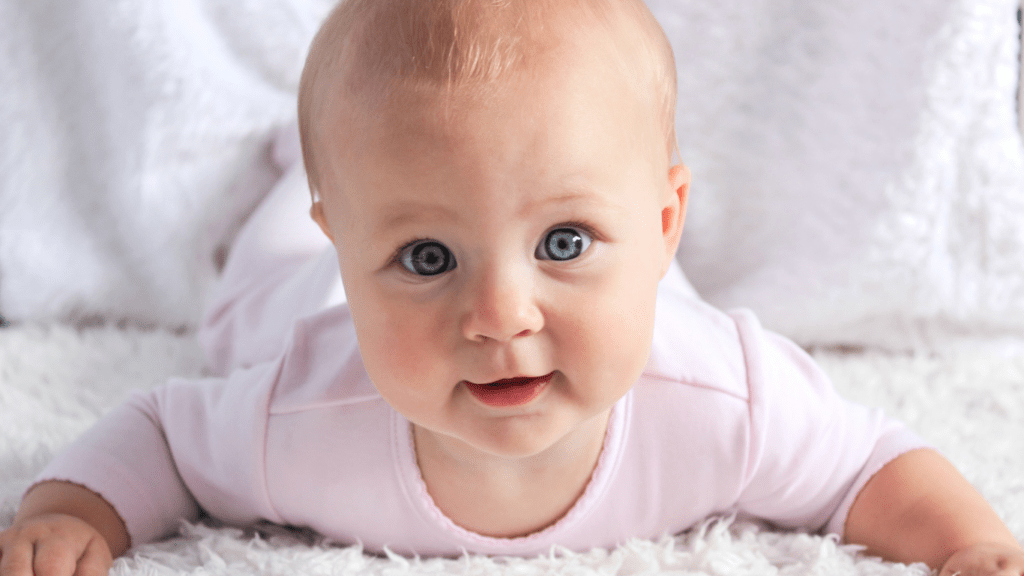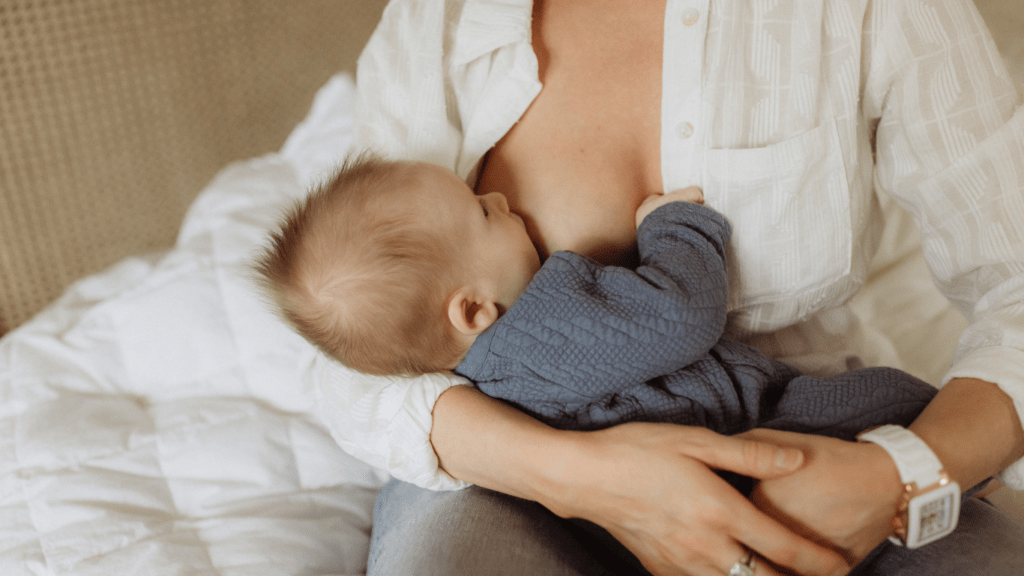Understanding the Importance of Baby’s First Bath
Bathing a newborn serves more than just cleanliness. It’s a bonding experience that strengthens the emotional connection between parent and baby. When babies enter a warm bath, they feel comforted, reminiscent of the womb, instilling a sense of security.
A baby’s first bath also offers parents a hands-on opportunity to learn about their child’s physical features and skin condition. Parents can check for any unusual marks, rashes, or dry patches, providing early detection of potential issues. This first contact teaches parents how to handle their fragile newborn with care.
Bathing promotes healthy skin by removing residual vernix (a waxy coating on newborn skin), which helps in adapting to the outside environment. Even though the vernix has protective properties, cleaning it off supports newborn skin health post-birth.
Ensuring the right water temperature (around 98.6°F) prevents chilling and discomfort, making the experience pleasant. This precaution exemplifies the importance of understanding a baby’s first bath: it’s not just about getting clean but also about ensuring safety and comfort.
Thus, a newborn’s first bath is multifaceted, encompassing emotional bonding, health inspection, and safety measures. Each aspect contributes to making this a significant event in a baby’s early life.
Preparing for the Bath
When preparing for your baby’s first bath, it’s vital to ensure everything is in place to make the experience smooth and enjoyable.
Gathering Supplies
Organize essential supplies before beginning. You’ll need a baby bathtub, a soft washcloth, baby soap, a cup for rinsing, a hooded towel, and clean clothes. Arrange these items within arm’s reach to avoid leaving your baby unattended. For example, if you’re using a rinse cup, place it alongside the soap and washcloth for easy access. Pre-fill the bathtub with water at the right temperature, using a baby thermometer to ensure it’s around 98°F.
Setting Up the Bath Area
Choose a safe, warm location for the bath. Countertops, changing tables, and bathroom floors work well. Ensure the surface is non-slip if it’ll get wet. Place the bathtub on this flat, stable surface. Lay out towels and clean clothes nearby, allowing for easy transition post-bath. If you’re bathing your baby in the bathroom, keep the door closed to retain warmth. Test the water temperature again before placing your baby in the tub.
Step-by-Step Instructions for Baby’s First Bath

Follow these steps to give your baby their first bath in a safe and enjoyable way.
Step 1: Test the Water Temperature
I ensure the water is at an ideal temperature of around 98°F. I use a baby thermometer to confirm this. The water should feel warm to my wrist but not hot. If in doubt, I add a little cold water and test again.
Step 2: Undress the Baby
I undress my baby in a warm room to avoid chills. I remove the diaper last, cleaning the diaper area with a wipe if necessary. I keep the baby wrapped in a soft towel until we’re ready to bathe.
Step 3: Gently Place Baby in the Bath
I lower my baby into the water slowly, supporting the head and neck with one hand. I use my other hand to gently guide the baby’s feet and body into the tub. The baby’s head stays above the water at all times.
Step 4: Wash the Baby
I use a soft washcloth and mild baby soap to gently wash the baby. I start with the face, using plain water for the sensitive skin around the eyes and mouth. I move to the rest of the body, paying special attention to skin folds.
Step 5: Rinse and Remove the Baby
I rinse my baby thoroughly with a rinse cup or my hand, making sure no soap is left on the skin. I lift my baby out of the tub slowly, keeping a firm hold on the neck and head for support.
Step 6: Dry and Dress the Baby
I wrap my baby in a hooded towel immediately after the bath, patting the skin dry gently. I pay attention to drying skin folds to prevent irritation. After drying, I put on a clean diaper and dress my baby in comfortable clothing suitable for the room’s temperature.
Safety Tips for Bathing a Newborn
New parents often feel both excited and anxious when it comes to bathing their newborn. Ensuring the safety of the baby is paramount during this important activity. Below are critical safety tips to help provide a secure and enjoyable bath time experience.
- Never Leave the Baby Unattended: Always keep an eye on the baby while in the bath. Gather all necessary supplies such as a baby bathtub, soft washcloth, baby soap, rinse cup, hooded towel, and clean clothes beforehand to avoid leaving the baby alone.
- Check Water Temperature: Ensure the bathwater is at a safe temperature. Aim for around 98°F using a baby thermometer. Hot water burns can occur at 120°F within seconds, making temperature checks essential.
- Use a Non-Slip Surface: Place a non-slip mat or insert in the baby bathtub to prevent slipping. Wet surfaces can be very slippery, so taking this precaution helps keep the baby in a stable position.
- Support the Baby’s Head and Neck: Hold the newborn securely with one hand supporting their head and neck. Babies have weak neck muscles, and supporting their head is crucial to ensure they remain safe while bathing.
- Use Gentle Bath Products: Choose mild, hypoallergenic baby soaps and shampoos. These minimize skin irritation and keep the baby’s delicate skin clean without harsh chemicals.
- Limit Bath Time: Keep baths short, around 5-10 minutes. Long exposure to water can dry out a newborn’s sensitive skin, so it’s best to keep the bath brief.
- Keep the Room Warm: Ensure the room is warm before and after the bath. Babies can lose body heat quickly, so maintaining a comfortable room temperature helps them stay warm throughout the process.
- Dry Thoroughly: After the bath, dry the baby thoroughly. Pay special attention to skin folds, as moisture can lead to irritation or infections. A hooded towel helps keep the baby warm and dries their head and body efficiently.
These safety tips, combined with the step-by-step bathing guide, can help new parents feel more confident and make the first bath a pleasant experience for both the parent and the baby.
Common Mistakes to Avoid
Avoiding common mistakes ensures a safe and enjoyable bath experience for your baby. Here are errors to watch out for:
- Using Too Hot or Cold Water
Hot or cold water can cause discomfort or burns. Maintain water temperature around 98°F using a baby thermometer for accuracy. - Leaving Baby Unattended
Even for a moment, never leave your baby alone in the bath. Have all supplies within reach to avoid this risk. - Using Harsh Products
Adult soaps can irritate your baby’s sensitive skin. Opt for gentle, baby-specific cleansers and shampoos. - Bathing Too Frequently
Daily baths can dry out a newborn’s skin. For newborns, 2-3 baths per week suffice unless necessary for hygiene reasons. - Not Supporting Baby’s Head and Neck
Newborns have weak neck muscles. Always support their head and neck during the bath to prevent injury. - Overfilling the Tub
Too much water increases the risk of drowning. Fill the baby bathtub with just a few inches of water. - Not Checking the Room Temperature
A cold room can make the baby uncomfortable. Ensure the bathing area is warm to keep your baby cozy.
By avoiding these mistakes, you enhance safety and comfort during your baby’s first bath.



 David Withers – Senior Parenting Advisor David Withers brings over 15 years of expertise in child development and family dynamics to his role as Senior Parenting Advisor at Makes Parenting Watch. A respected voice in the parenting community, David has worked extensively with families, helping them navigate the complexities of raising children through every phase of life—from infancy to adolescence. His articles are known for their evidence-based approach, offering parents practical, actionable tips on topics such as sleep training, positive discipline, developmental milestones, and fostering emotional resilience in children. In addition to his writing, David conducts workshops and webinars to provide personalized advice to parents dealing with specific challenges. His deep understanding of child psychology and development ensures that Makes Parenting Watch remains a valuable and reliable resource for parents seeking guidance in today’s fast-paced world.
David Withers – Senior Parenting Advisor David Withers brings over 15 years of expertise in child development and family dynamics to his role as Senior Parenting Advisor at Makes Parenting Watch. A respected voice in the parenting community, David has worked extensively with families, helping them navigate the complexities of raising children through every phase of life—from infancy to adolescence. His articles are known for their evidence-based approach, offering parents practical, actionable tips on topics such as sleep training, positive discipline, developmental milestones, and fostering emotional resilience in children. In addition to his writing, David conducts workshops and webinars to provide personalized advice to parents dealing with specific challenges. His deep understanding of child psychology and development ensures that Makes Parenting Watch remains a valuable and reliable resource for parents seeking guidance in today’s fast-paced world.
